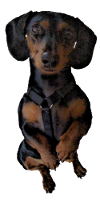There are three computer modules which coordinate to control the Ram power train.
Engine Control Module (ECM) – On the left side of the engine behind the fuel filter
Fuel Injection Pump Control Module (FPCM) – On top of the injection pump
Powertrain control module (PCM) – bolted to the Ram firewall under the hood
A response from Cummins about the problems with the high idle option on Dodge trucks contained this interesting tidbit: Dodge buys the engine without electronic controls and without warranty. Their service tool and their electronic control module runs the Bosch pump on our engine. It’s their deal: their controls, their software, their service tool, their service tool software, their warranty, their feature … their issue.
PCM / ECM wiring diagrams (aprox 250kb per file) sent by Chris Winn aka C1B1DIESEL:
Thanks to DodgeRam.org for images —
There is no direct throttle connection to the injection pump – the throttle acts on an accelerator pedal position position sensor (APPS) which reports the throttle position to the ECM. The ECM then orders the FPCM to inject the correct amount of fuel for the current engine load, engine speed, and throttle position. Communication between the ECM and the FPCM takes place over a two wire CCD data bus. The FPCM determines the amount of fuel to inject, and the injection timing. The ECM can adapt its programming to meet changing operating conditions.
The PCM does not control the fuel system, but it does manage the cruise control, battery charging, A/C operation, instrument panel functions, and automatic transmission shifting.
Engine RPM and timing are derived from the Crankshaft Position Sensor (CKP) on 1998-2000 models. A 35 tooth tone ring with a gap where the 36th tooth should be is bolted to the crankshaft. A hall effect sensor registers each tooth as it passes and sends the signal to the ECM. The tooth gap corresponds to 60 degrees BTDC of cylinder #1.
A Camshaft Position Sensor (CMP) senses a hole in the back of the camshaft drive gear to check for TDC of cylinder #1. This signal is used for diagnostic purposes and is not used to control the fuel system. The crankshaft position sensor was deleted for 2001 and 2002 models; engine speed, crankshaft position, and injection timing information will be derived from the camshaft position sensor signal. Notches are cut into the rear face of the camshaft gear. A hall effect sensor registers each notch as it passes, and sends the signal to the ECM. A missing notch corresponds to TDC of cylinder #1.
Other sensors used for engine control are:
APPS Idle validation Switches #1 and #2; used to verify the throttle closed position for APPS calibration
ECT – Engine Coolant Temp; used to determine injection timing and fuel rates for engine protection
IAT – Intake manifold Air Temperature; used to control the intake manifold air heater, determine injection timing and fuel rates for engine protection
Intake Manifold Pressure Sensor (boost); used to determine fuel injection timing and fuel rates. If turbocharger boost exceeds 20 psi, the fuel rate is reduced to protect the engine and maintain emissions compliance. NOTE: This sensor will detect wastegate tampering and derate the engine power to maintain boost levels below specification. From the seat-of-the-pants feeling, you might think the power has increased, but a dyno will show a power loss (on a stock engine)! There are aftermarket systems and techniques to increase engine power.
[thanks to Chris Winn aka C1B1DIESEL]
